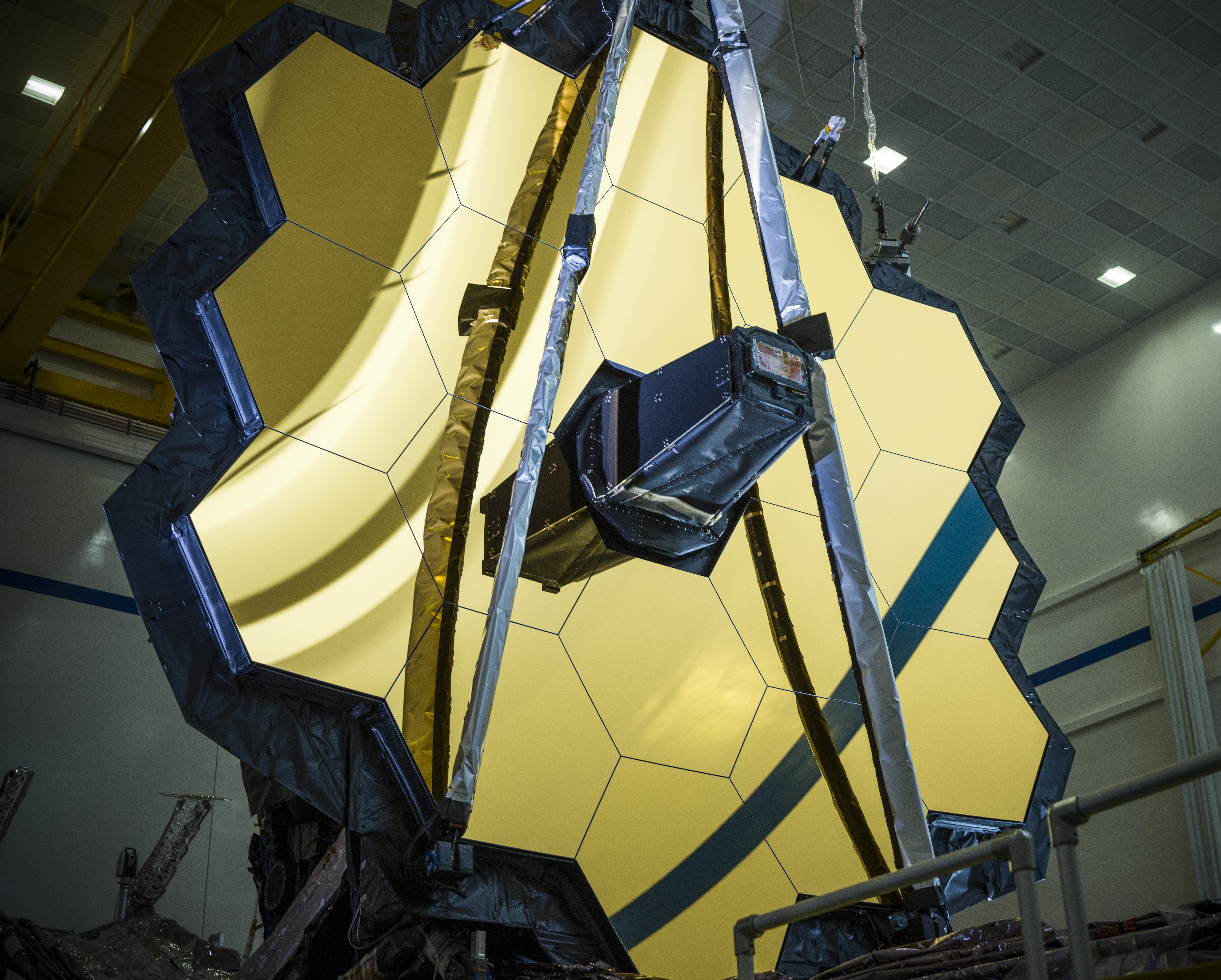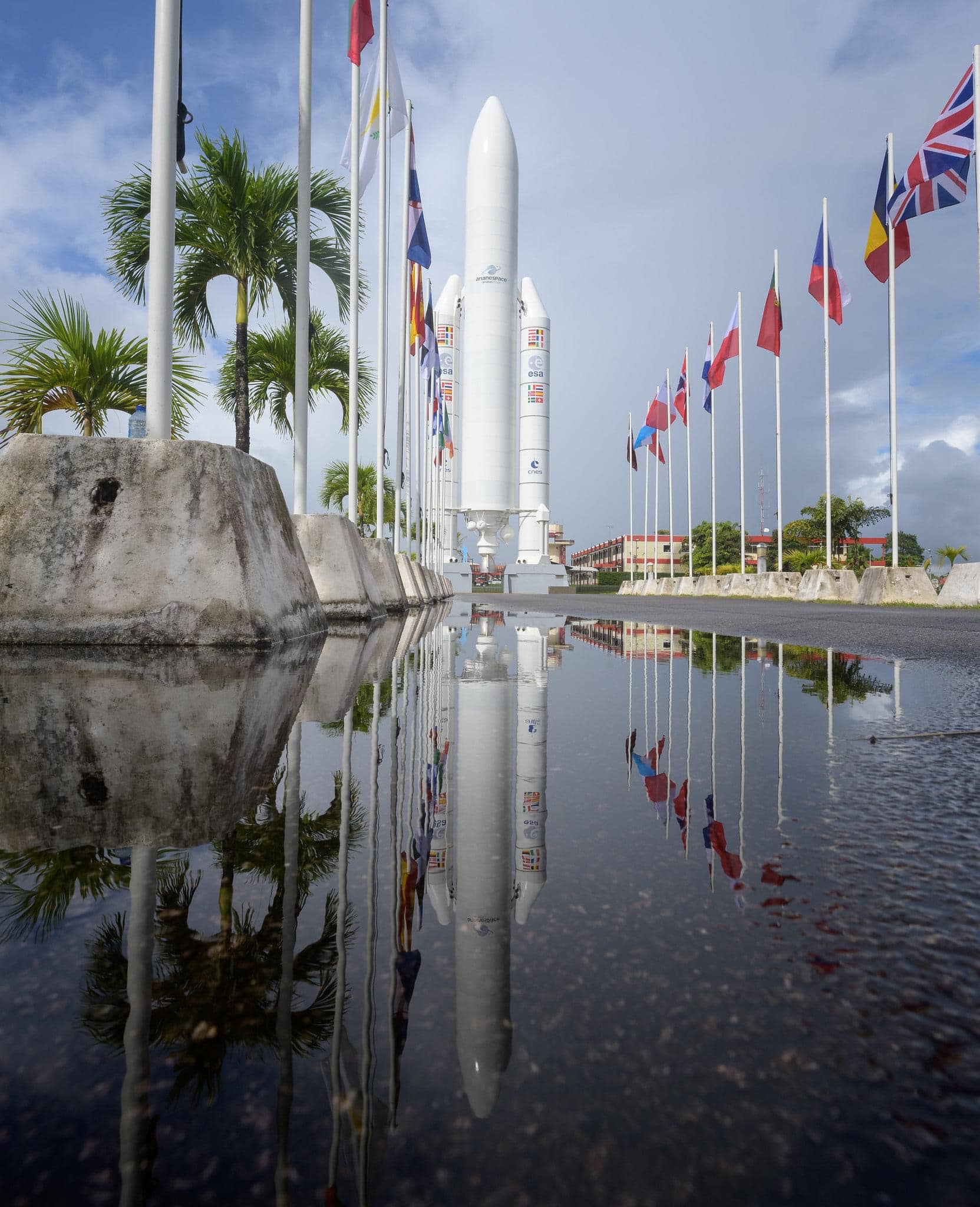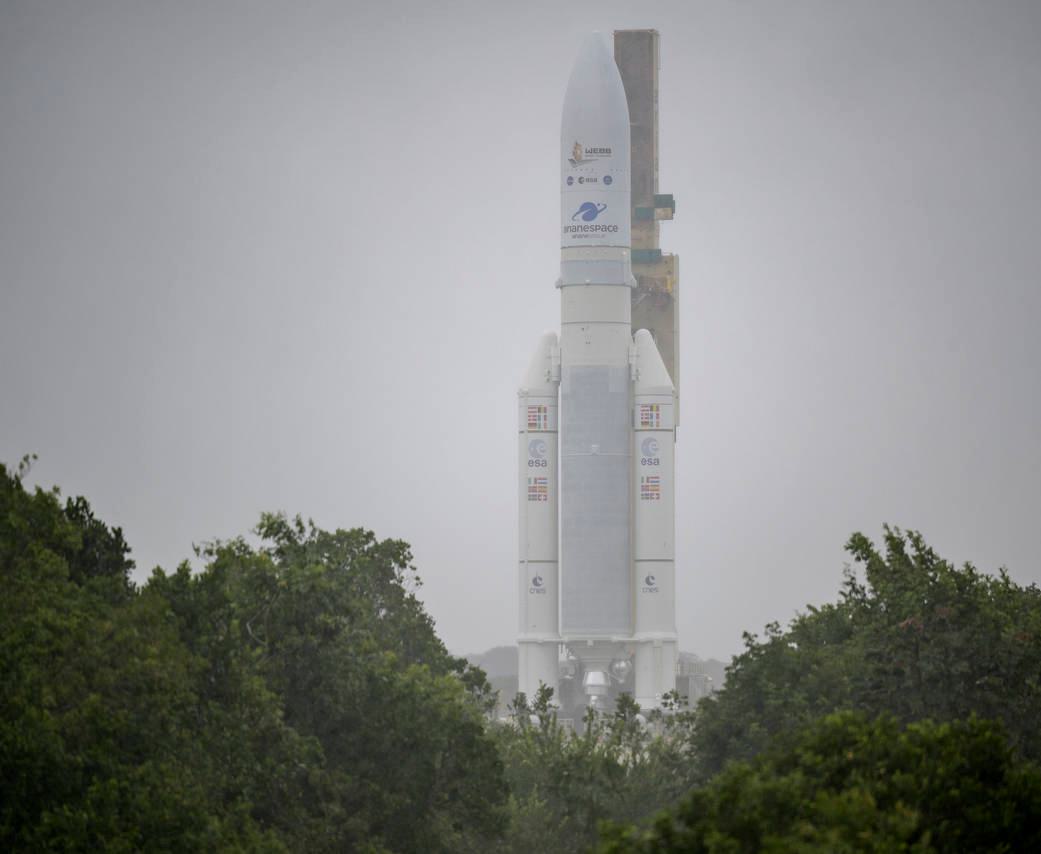By Brandon Moseley
The James Webb Space Telescope will be launched on Christmas morning. Bad weather has caused delays in the launch which had been set for Christmas Eve.
NASA will provide coverage of prelaunch, launch, and postlaunch activities for the launch of the James Webb Space Telescope on the NASA ap and on their website: https://www.nasa.gov/nasalive
Webb is the world’s largest and most powerful space science telescope ever launched into orbit and the next-generation version of the wildly successful Hubble Space Telescope – though much more powerful and more advanced. The $8 billion project is the costliest and most ambitious space telescope to date.
Webb is scheduled to launch at 6:20 a.m. CST Saturday, Dec. 25, on an Arianespace Ariane 5 rocket from Europe’s Spaceport in Kourou, French Guiana, on the northeastern coast of South America.
Coverage will begin at 2:15 a.m. with James Webb Space Telescope highlights and launchpad views from Kourou, French Guiana
A 5:00 a.m. the coverage of the launch of the telescope will begin. The launch itself is scheduled for 6:20 a.m. CST with coverage from NASA’s Goddard Space Flight Center the, Space Telescope Science Institute, and Kourou, French Guiana. At 8:00 a.m. there will be a Webb Space Telescope post-launch briefing from Kourou, French Guiana.
The live launch coverage in English will begin at 5:00 a.m. on NASA TV, the NASA app, and the agency’s website. The public can also watch live on Facebook, Twitter, YouTube, Twitch, and Daily Motion. NASA also will offer a launch broadcast in Spanish beginning at 5:30 a.m. on the agency’s website and Spanish-language social media accounts.

The Webb mission is an international partnership with ESA (European Space Agency) and the Canadian Space Agency. The mission of Webb is to explore every phase of cosmic history – from within the solar system to the most distant observable galaxies in the early universe, and everything in between. NASA said that Webb is expected to reveal new and unexpected discoveries and help humanity understand the origins of the universe and our place in it.
NASA’s Marshall Space Flight Center in Huntsville said on social media”
“We don’t yet know what @NASAWebb will uncover. Will we get answers? Will we have more questions? One thing is certain: The story of us is a never-ending quest for knowledge.
As Carl Sagan said: “We can’t help it.”
The James Webb Space Telescope has involved contributions from thousands of scientists, engineers, and other professionals from more than 14 countries and 29 states, in nine different time zones.
Mark Voyton is the Webb observatory integration and test manager at NASA’s Goddard Space Flight Center in Greenbelt, Maryland.
“To me, launching Webb will be a significant life event – I’ll be elated of course when this is successful, but it will also be a time of deep personal introspection. Twenty years of my life will all come down to that moment,” said Voyton. “We’ve come a long way and worked through so much together to prepare our observatory for flight. The telescope’s journey is only just beginning, but for those of us on the ground who built it, our time will soon come to an end, and we will have our opportunity to rest, knowing we put everything on the line to make sure our observatory works. The bonds we formed with each other along the way will last far into the future.”
After launch, Webb will undergo an action-packed six-month commissioning period. Moments after completing a 26-minute ride aboard the Ariane 5 launch vehicle, the spacecraft will separate from the rocket and its solar array will deploy automatically. After that, all subsequent deployments over the next few weeks will be initiated from ground control located at the Space Telescope Science Institute.
Webb will take one month to fly to its intended orbital location in space nearly one million miles away from Earth, slowly unfolding as it goes. Sunshield deployments will begin a few days after launch, and each step can be controlled expertly from the ground, giving Webb’s launch controllers full control to circumnavigate any unforeseen issues with deployment.
Once the observatory has cooled down and stabilized at its frigid operating temperature, several months of alignments to its optics and calibrations of its scientific instruments will occur. Scientific operations are expected to commence in approximately six months.
‘Flagship’ missions like Webb are generational projects. Webb was built on both the legacy and the lessons of missions before it, such as the Hubble and Spitzer space telescopes, and it will, in turn, provide the foundation upon which future large astronomical space observatories may one day be developed.
Bill Ochs is the Webb project manager for NASA Goddard.
“After completing the final steps of the James Webb Space Telescope’s testing regimen, I can’t help but see the reflections of the thousands of individuals who have dedicated so much of their lives to Webb, every time I look at that beautiful gold mirror,” said Ochs.
Webb is scheduled to explore the mysteries of our solar system, the thousands of exoplanets astronomers have discovered in other solar systems, the massive black hole at the center of our galaxy, and probe the mysterious structures and origins of our universe.
To connect with the author of this story, or to comment, email brandon.moseley@1819News.com.











